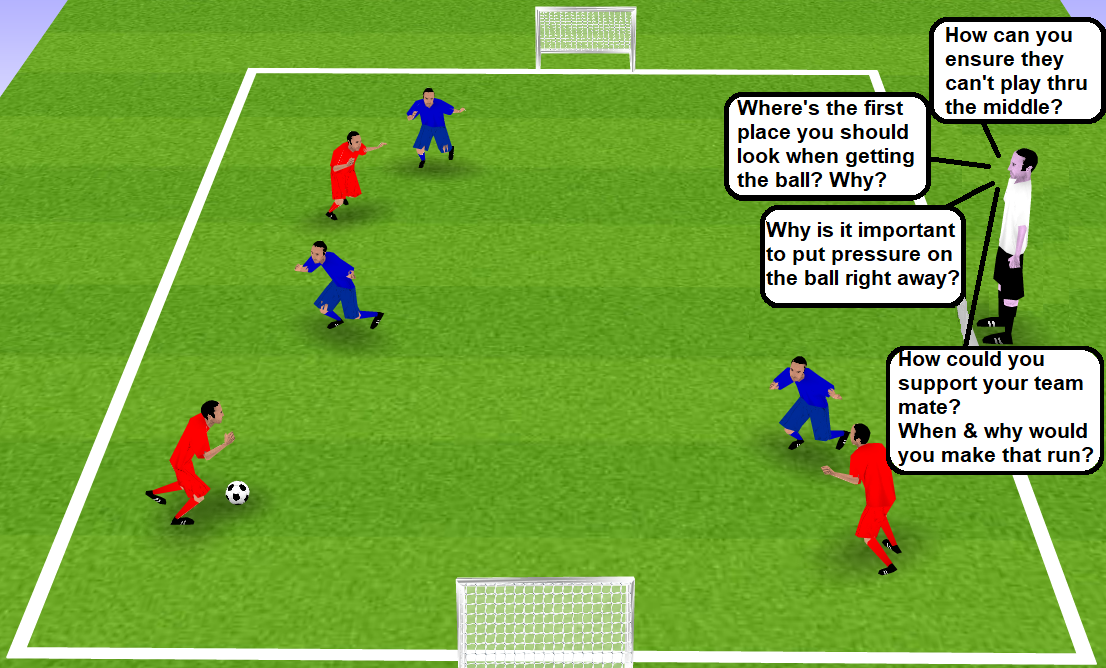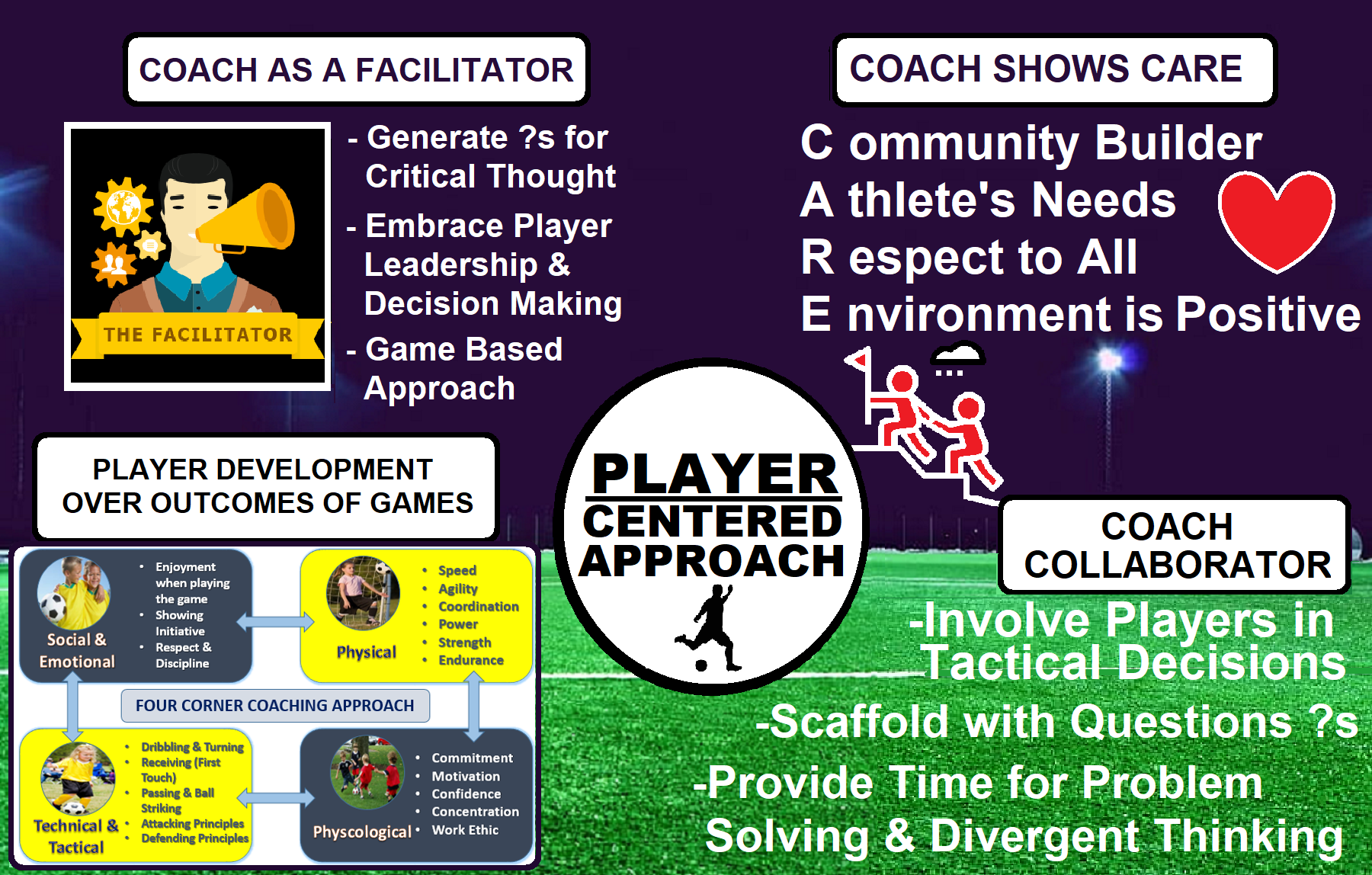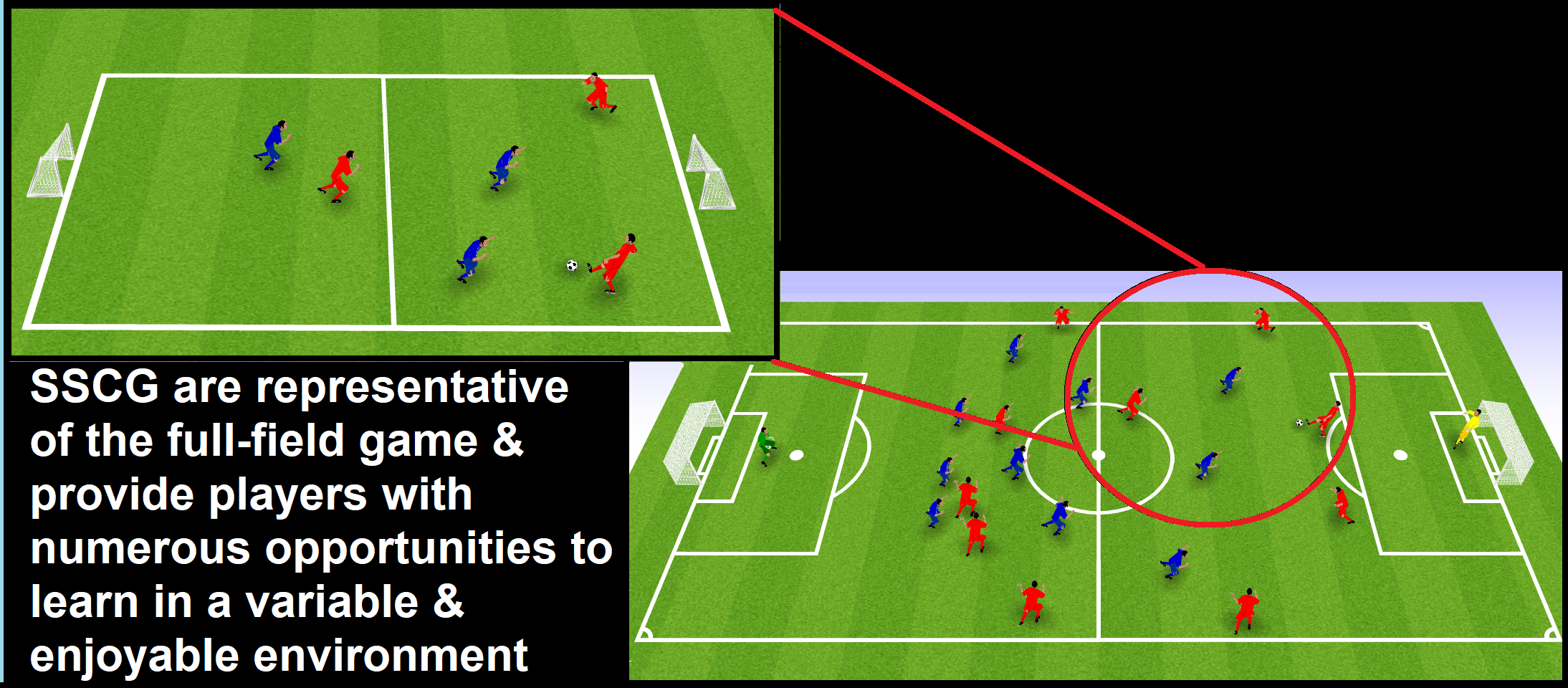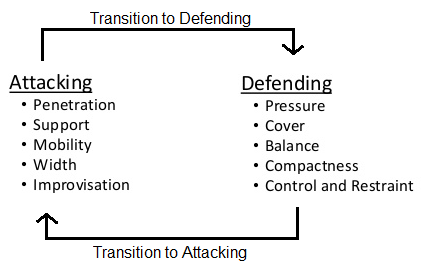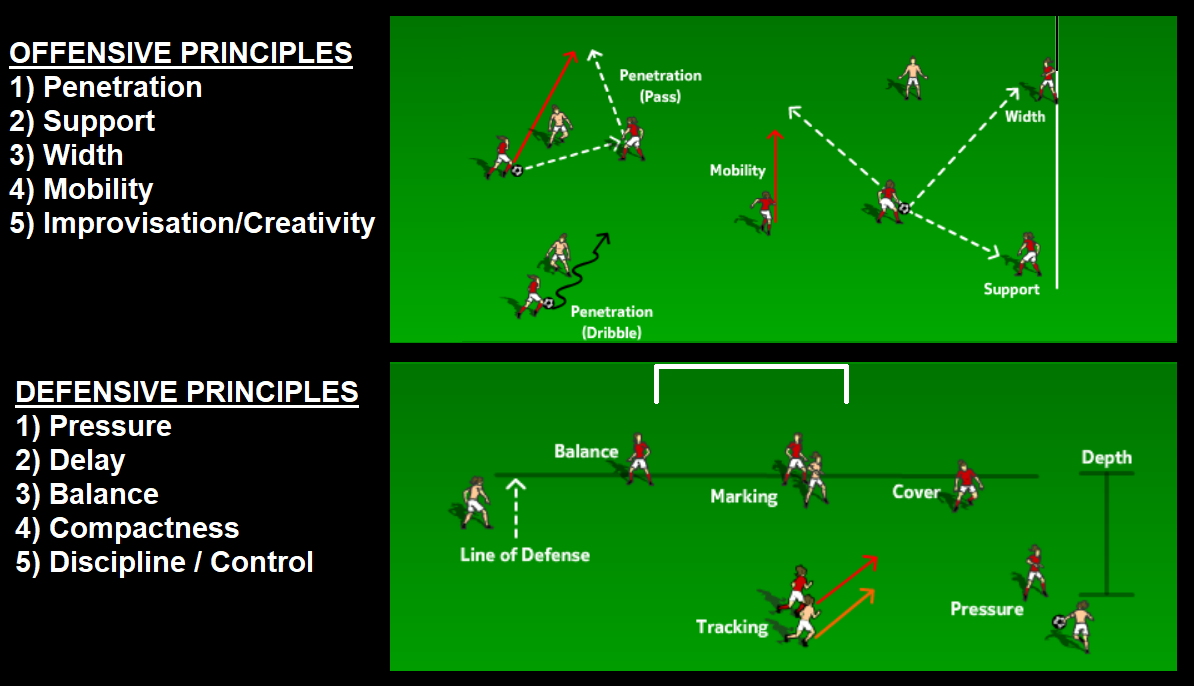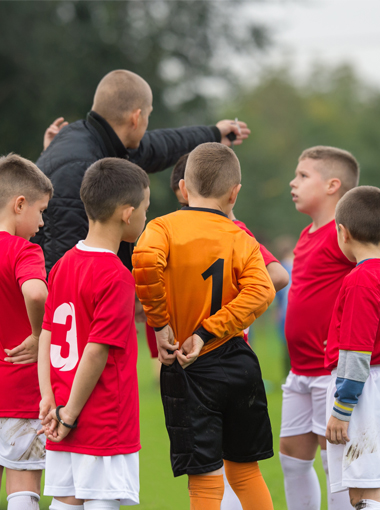
Coaching Concepts and Practice Design Principles
Coaching youth sports is more than just winning a game or hoping the kids on your team are having fun (although that is incredibly important). There is a science and design principle to follow that will ensure your team and the teams in your club can find the most success.
On this page we will show you some of the important coaching concepts and the design principles that you can use to find that success in your players and in yourself. We've grouped these into "Coaching Concepts" and "Practice Design Principles"; however, there is overlap between them.
Scroll down to read more.
Coaching Concepts
Click on each to reveal more information about that topic.
Constraints - Led Approach
Visual Exploratory Behaviour
Importance of Questioning
Maximizing Player Development
Practice Design Principles
Click on each to reveal more information about that topic.
Repetition Without Repetition
Small-Sided Conditioned Games
Principles of Play
Created in the 1960s by Allen Wade and the English FA, the principles of play are offensive and defensive patterns which underpin successful team play. These principles have been used in coach education courses for decades and have even been borrowed by other sports.
These patterns continually play out in games. Looking at the image to the right you can see that by understanding and observing these patterns, a coach can assess and prescribe what their team needs to work on and how to be successful.
A closer look
Here are some specific points of both the Offensive and Defensive principles that we are discussing.
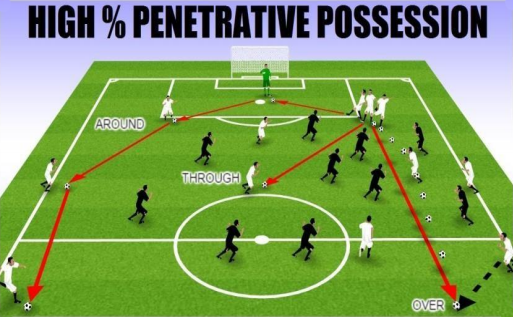
Can we advance the ball forward? If not can we go to the side? If not can we go backwards and around? Three ways to advance the ball - Over-Through or Around. Which is the best option?
That all depends on where the defenders are. Our players must be visually aware to quickly avoid pressure on the ball. At the same time our teams must penetrate quickly to eliminate defenders while maximizing offensive opportunity.
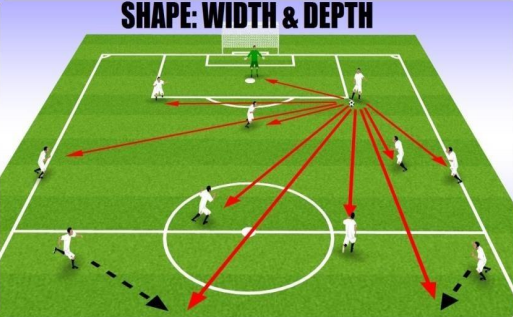
Establish larger passing lanes and more space and time on the ball by providing width and depth.
Coupled with player support and mobility, proper shape allows for more passing options.
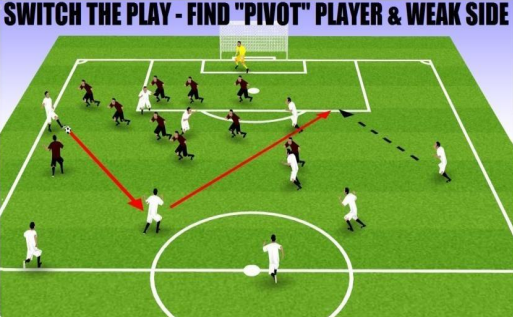
Avoid pressure on the ball. "Start Again" to find the "Pivot Player" and switch to the point of attack to the "Weak-Side" were there are less defenders.
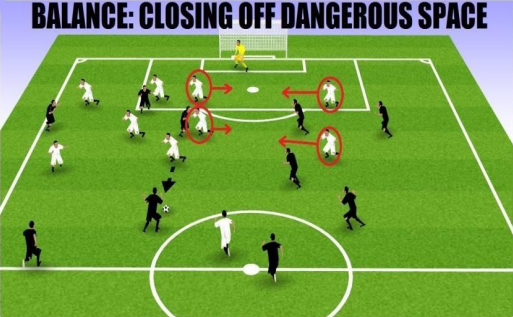
Closing off dangerous space should be a defensive priority. As a rule of thumb, there should always be two defenders between the goal posts. Additionally, wide players furthest away from the ball need to tuck into the center of the field to close off dangerous space.
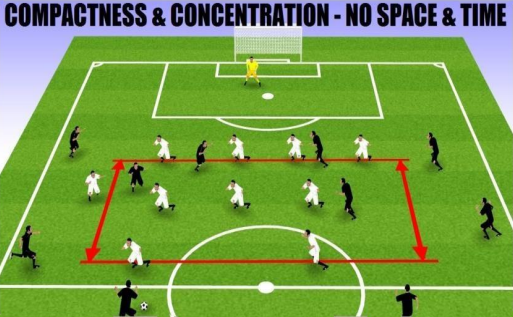
By reducing the distance between the back-line of defenders and the front-line, we squeeze the opposition and eliminate space and time on the ball. The back-line should be aggressive and move higher up the field when the ball moves further backwards.
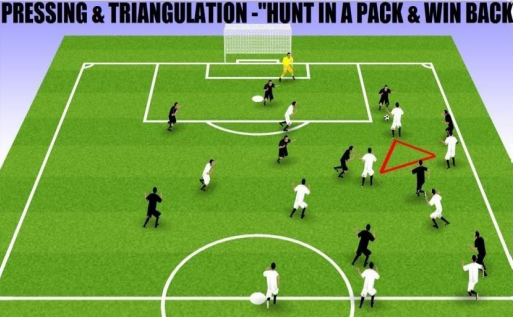
Can we put pressure on the ball. Once this happens other players can then support this pressure, forming tight triangles to eliminate passing lanes and forward progression.
We're now going to move on to the next section of the Alberni Athletics Soccer Club Resource - "Coaching Priorities & Player Learning Outcomes".
Click the button below to move on to this section or return to the top and select another part of the resource.


